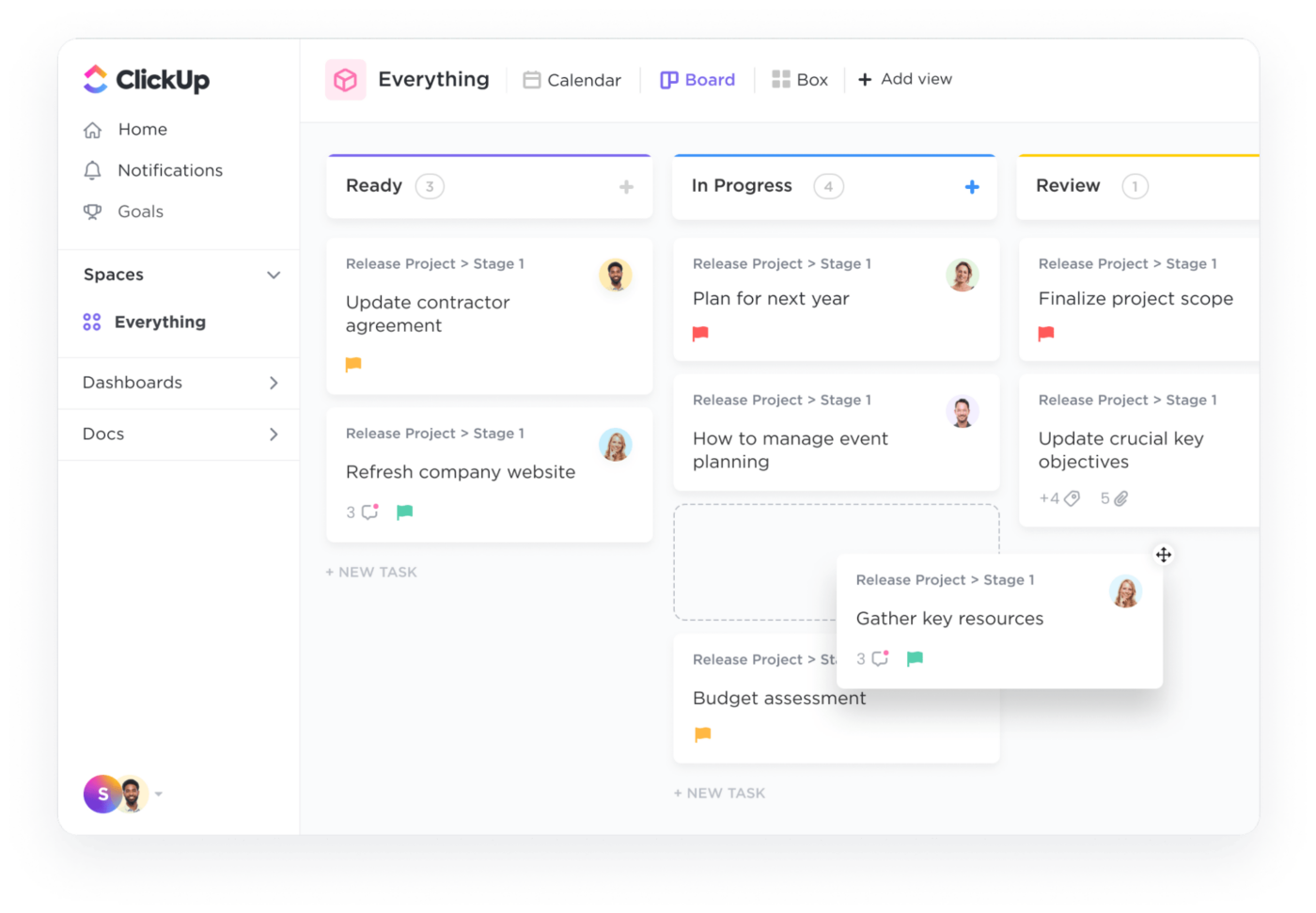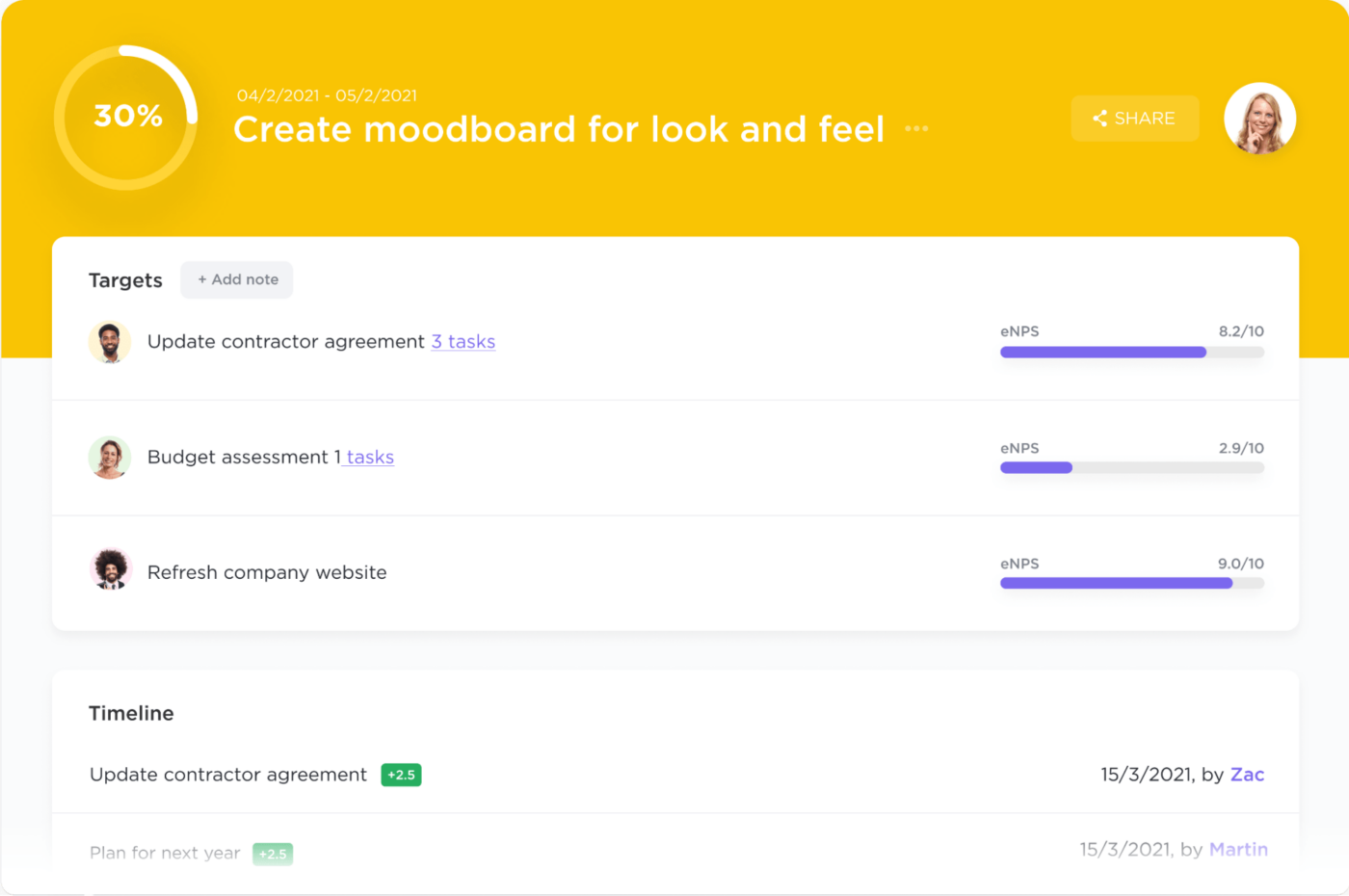
Each and every project has stakeholders—people who have an interest or influence in the work. Knowing who is affected by a project is key to getting buy-in and support for the project’s success. One way project managers can accomplish this critical management step is by doing stakeholder analysis.
Part of a larger stakeholder engagement plan, this analysis lets you know who these people are. It also shows you how the project impacts them and what role they play in ensuring goals are met.
In this article, we’ll show you what stakeholder analysis is and why it’s important. You’ll also learn how to do stakeholder analysis and find a real-world example to reference when creating your own. 🛠️
What is Stakeholder Analysis? Examples and Tips for ManagersSummarize this article with AI ClickUp Brain not only saves you precious time by instantly summarizing articles, it also leverages AI to connect your tasks, docs, people, and more, streamlining your workflow like never before. Summarize article
Summarize this article for me pleaseStakeholder analysis is the process of identifying individuals that are affected by a project and their needs. This analysis includes steps for organizing and prioritizing the different types of stakeholder groups. The process focuses on grouping similar project stakeholders based on how much they will participate, their level of interest, and their level of influence. There is also a focus on how to communicate with each of the different stakeholder types. The goal of stakeholder analysis is to identify internal and external groups that may have an impact on the project initiatives in terms of power or interest. It’s the first step in stakeholder management and a critical component when getting support for a project. ✨

Summarize this article with AI ClickUp Brain not only saves you precious time by instantly summarizing articles, it also leverages AI to connect your tasks, docs, people, and more, streamlining your workflow like never before. Summarize article
Summarize this article for me pleaseStakeholder analysis is vital to ensure successful project outcomes. It provides early alignment, helps you avoid potential roadblocks, and creates a communication roadmap to meet your goals. Here’s a closer look at what makes stakeholder analysis so important. 👀 Check out the best stakeholder management software!
The early stages of projects are often chaotic. Conducting stakeholder analysis provides a clear purpose and lays out a strategy for getting key individuals on board early on. That makes kick-off and early-stage meetings easier to put together and more effective. Plus, project monitoring is seamless since you have a clear vision. Every stakeholder will know what’s expected of them and how they’ll benefit from the project objectives. You’ll also have a process roadmap to guide you along the way when you need to provide updates to different groups of potential stakeholders.
When you’re in project planning mode, knowing who your work will impact and getting support is critical during the early stages. Stakeholder analysis gives you insight into who will lend a hand and who may need some nudging to get behind your vision and goals. By working with people who influence your project, you can draw on their knowledge and expertise to create deliverables. These individuals provide a form of backup in getting behind your project and influencing other stakeholders to get on board.

Nothing is worse than getting a few weeks into a project and finding out a key stakeholder doesn’t support your approach and wants to assign resources elsewhere. Identifying internal and external stakeholders early on means you’ll avoid these hiccups. With successful stakeholder analysis, you’ll pick out any potential detractors and their concerns. Next, it’s time to formulate a plan that addresses their objections and shows how this project benefits them. If they still decide not to come on board, you haven’t wasted the project team’s time and can search for a new approach.
Summarize this article with AI ClickUp Brain not only saves you precious time by instantly summarizing articles, it also leverages AI to connect your tasks, docs, people, and more, streamlining your workflow like never before. Summarize article